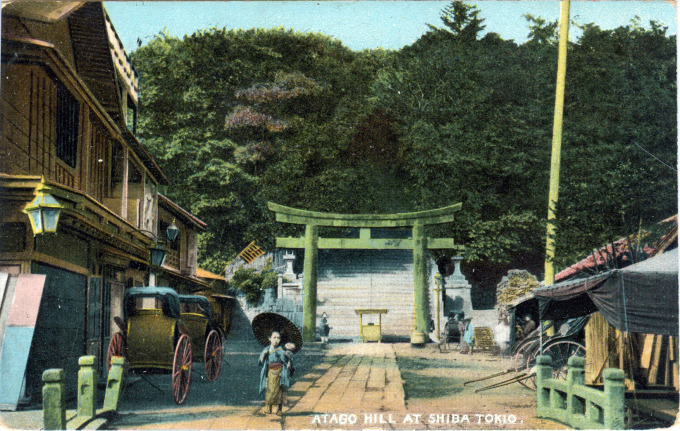
“Atago Hill at Shiba”, Tokyo, c. 1920. Steeps stone steps lead to the top of Tokyo’s highest elevation (a modest 26-meters), Atago. Known as Shussei no ishiden [‘stone stairway to success’], the steps total 86, ascending at a 40 degree angle.
See also:
Ohanami (Cherry Blossom Viewing)
The Tokyo Broadcasting Office, Atago Hill, c. 1930
“Through the gateway may be seen the double flight of steps, the one leading up to the top of the hill, in a perpendicular and unbroken line; the other curving less abruptly upward. And, although the height is probably the same, the undulating flight looked so much less arduous, that we instinctively turned to the right, willing to believe in its gentler promise.
“And thus we gain the summit of Atagoyama, so called from the god of Atago, to whom a temple here is dedicated. From no other point can do fine and commanding a view of the Bay of Edo, and the city washed by its waves, be obtained. And the picture that bursts suddenly upon the traveler is very striking.
“The hill fronts to the bay, but with a couple of miles of valley intervening, thickly covered by streets and temples. To the left, and in a northwestern direction, another two miles interval of plain is in like-manner filled up with a dense mass of houses, until a range of hills is reached on which the Tycoon’s castle stands.”
– The Capital of the Tycoon, Rutherford Alcock, 1863
- View of Tokyo from Atago Hill, c. 1910.
- View of Tokyo from Atago Hill, c. 1910.
There was a time when one could see the entirety of Tokyo (and, earlier still, Edo) from atop Atagoyama. Named for the higher Mount Atago at Kyoto, this Atagoyama is a narrow strip of elevated land just to the north of Shiba Park and Zojoji Temple and about a mile south of the Imperial Palace, with a pinnacle 80-feet above sea level.
There are many stories of samurai horse riders who masterfully challenged the hill’s formidable ascent and often successful descent. The most famous story tells of the samurai Magaki Heikuro’s ascent and descent on horseback to retrieve plum blossoms for the shogun Tokugawa Iemitsu. (And it would be atop Atagoyama that the last shogun, Yoshinobu, would formally surrender his army to the restored emperor Meiji.) Atagoyama was the prime stage, in Edo and after the Restoration, to show off equestrian artisty.
In 1925, a famed Imperial Army stableman, Iwaki Toshio, rode his steed to the top of Atago’s stairs in less than a minute – but, it took forty-five minutes to make his return down the precipitous descent. Iwaki’s horse almost collapsed and required a lengthy rest to recover.
“On the 26th night of the 7th moon, people in Tokyo visit the tea-houses at Atagoyama, and sit up until a very late, or rather early, hour to see the moon rise over the water, drinking sake the while, and composing verses appropriate to the sentimental character of the scene.”
– Things Japanese: Being Notes on Various Subjects Connected with Japan for the Use of Traveller and Others, Basil Hall Chamberlain, 1905
- Atagoyama cherry blossoms, c. 1920.
- Atago Hill and Atago Shrine, Tokyo, c. 1920.
“The plum, and cherry, blossoms atop Atagoyama surround Atago Shrine, built in 1603 by order of the first Tokugawa shogun, Ieyasu. The shrine was erected to protect the residents from fire, since its formerly excellent view was well suited to watch for fires, and therefore the main Shinto god worshiped in this shrine is the fire god Homusubi no Mikoto. The very steep stairs leading to the shrine are also famous, representing success in life.
“Midway through the Meiji era, a Western-style tower was built and, for a small fee, visitors could ascend to the top for unimpeded views of Mount Fuji, the Hakone mountain range, Miyakejima, Tsukuba, and the provinces beyond Tokyo along with a majestic view of the capital city, itself. The elevation proved opportune, too, when the predecessor to NHK, the Tokyo Broadcasting Office (JOAK), erected its transmission antenna atop the summit and began broadcast operations in 1924 under the leadership of Count Gotō Shinpei.”
– Wikipedia


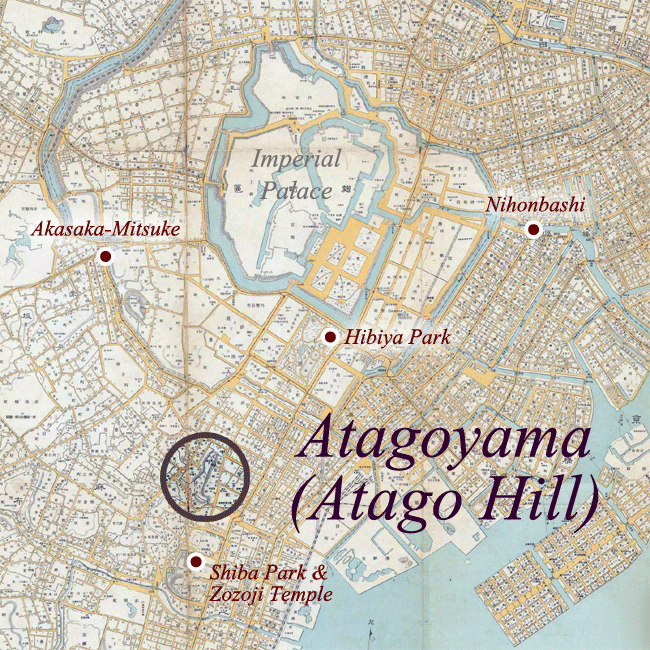
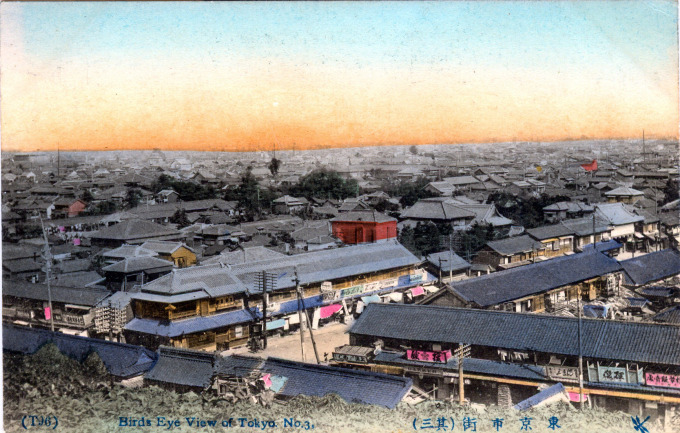
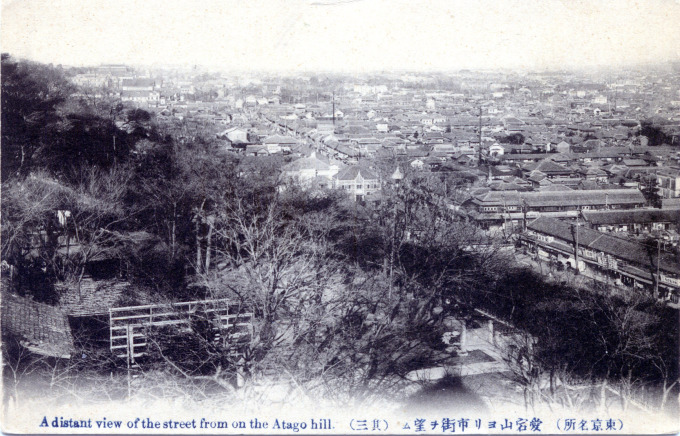
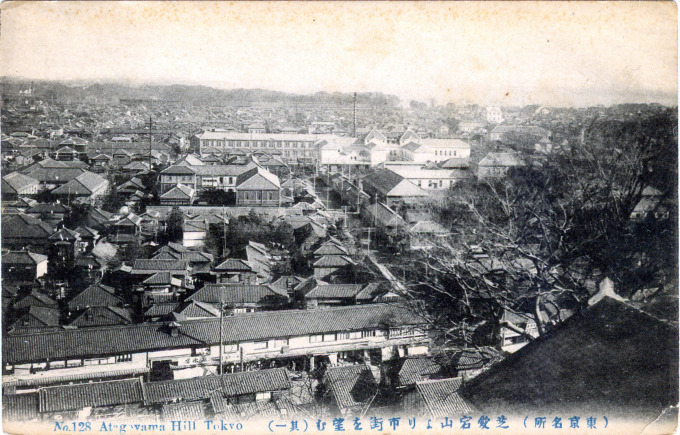
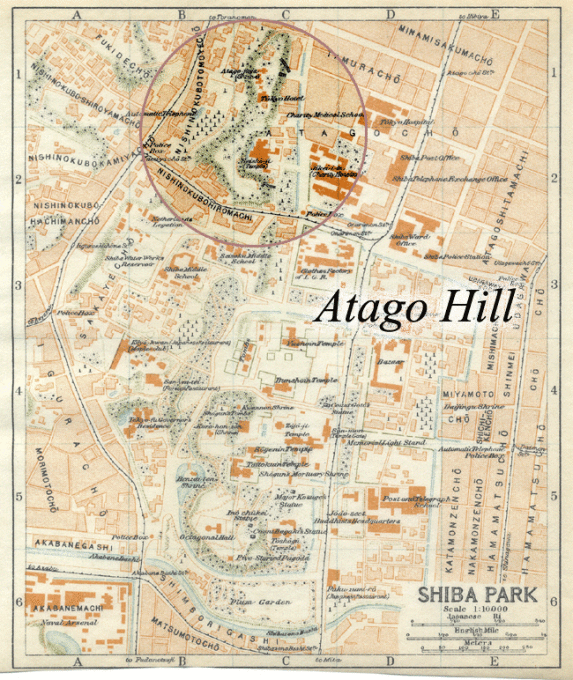
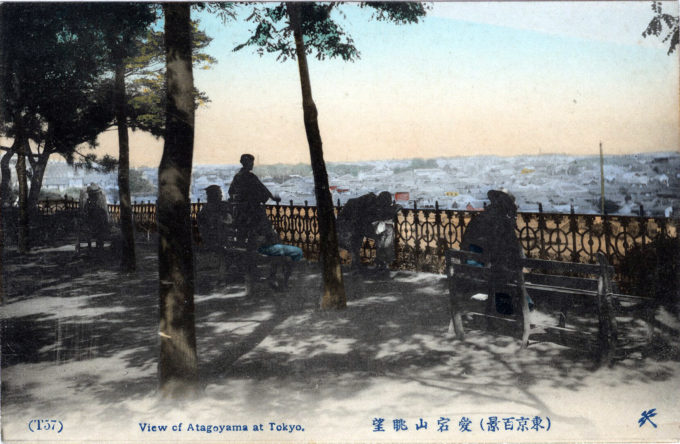
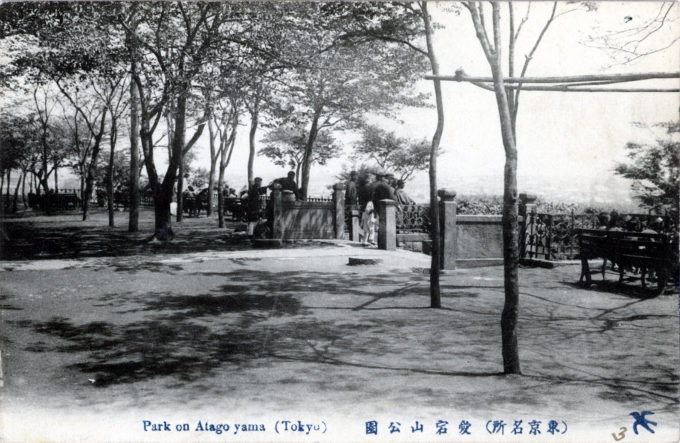
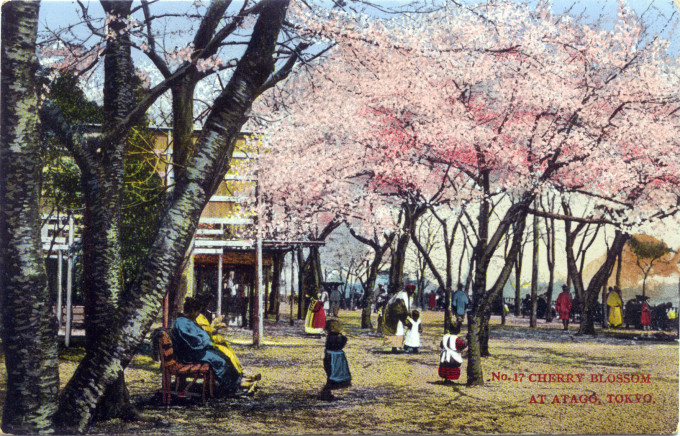
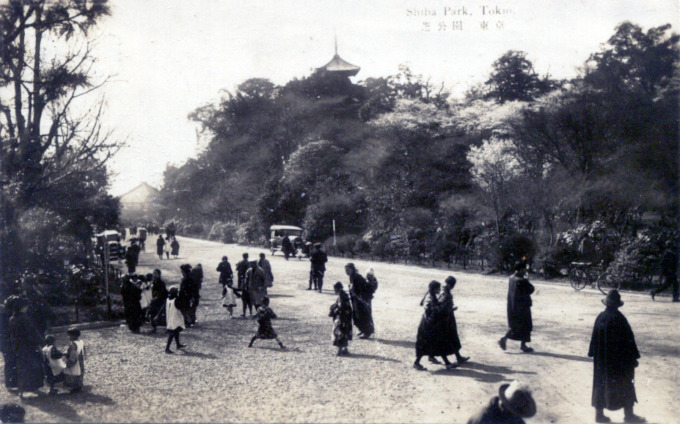
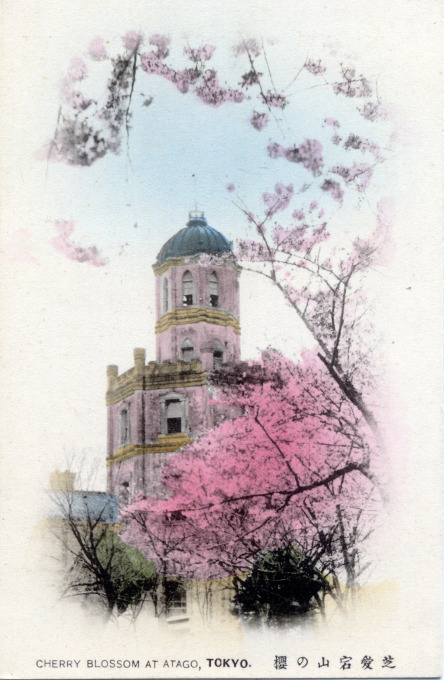
Pingback: The Tokyo Broadcasting Office (JOAK), Atago Hill, Tokyo, c. 1925. | Old Tokyo
Pingback: JOAK (NHK) Radio Studios, Atago Hill, Tokyo, c. 1930. | Old Tokyo